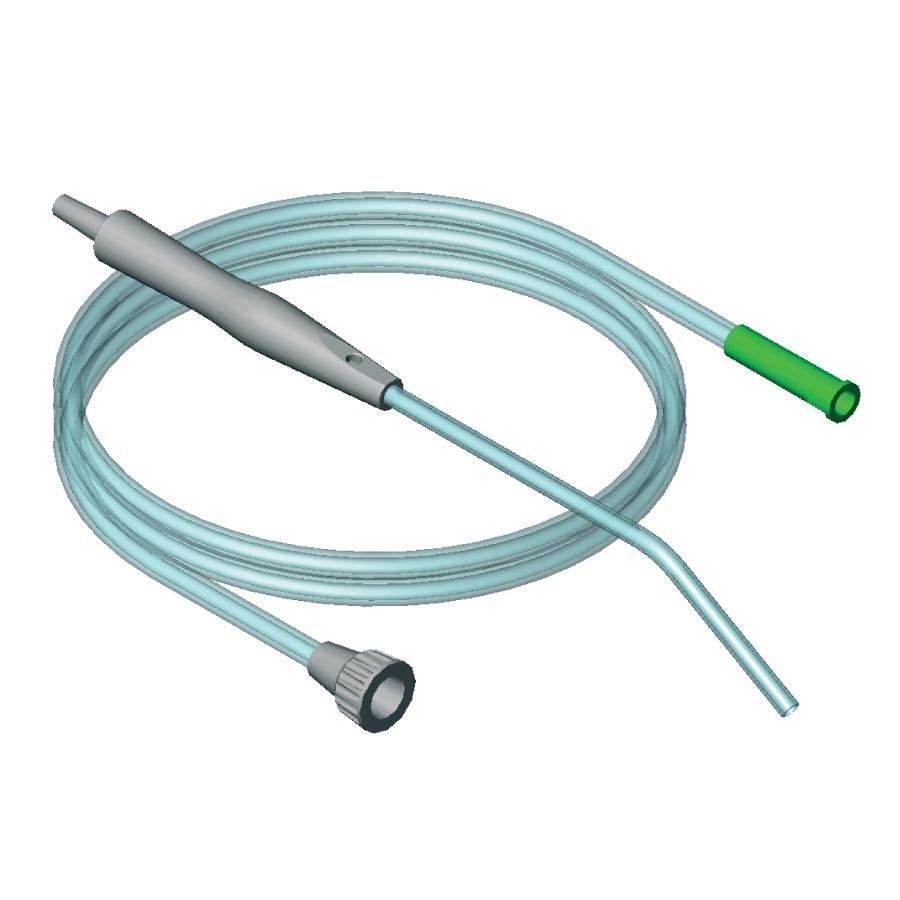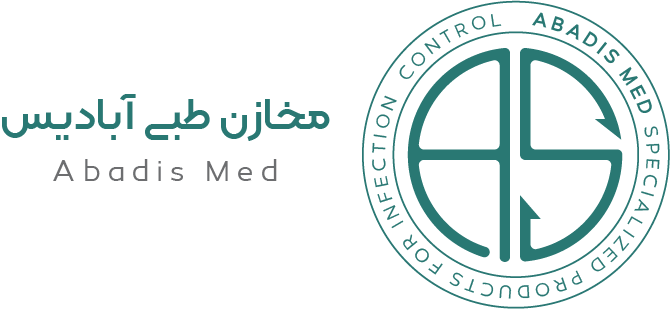Introduction
A suction connecting tube, is a flexible medical connector made of polyvinyl chloride (PVC) that connects to a suction device to drain blood, mucus, and other secretions from the patient’s body.
Abadis Suction Tubes are manufactured in three different sizes:
-
Size 25 (Blue)
-
Size 30 (Gray)
-
Size 35 (Black)
Structure and Function of the suction connecting tube
The suction connecting tube is a medical device precisely engineered to effectively remove bodily fluids and secretions. It consists of two main components:
-
The tube body, made from transparent, medical-grade PVC or silicone
-
The suction connector, located at both ends of the tube, designed funnel-shaped for easy attachment to suction devices
The combination of these two essential parts allows medical teams to efficiently and accurately remove fluids from the patient’s body. The high-quality structure of the tube contributes significantly to improving patient outcomes and hygiene during medical procedures.

Applications of the Abadis suction connecting tube
-
In surgical operations
-
In emergency and trauma units
-
In respiratory care
-
In dental clinics
Importance of Using High-Quality Suction Tubes
-
Ensuring quality care: Using a high-quality Abadis suction connecting tube ensures efficient drainage of bodily fluids and secretions, helping patients recover faster.
-
Reducing the risk of infection: Proper drainage prevents accumulation of fluids such as blood, mucus, or urine, which could otherwise promote bacterial growth and cause infections or complications.
-
Improved respiratory and cardiac performance: Clearing airways or thoracic cavities from accumulated fluids enhances breathing and cardiac function.
-
Greater efficiency during surgery: The use of high-quality Abadis suction tubes improves the surgeon’s visibility and access to critical areas, directly influencing surgical outcomes and patient recovery.

Advantages and Benefits
1. High Speed and Efficiency in Fluid Removal
The Abadis suction connecting tube provides rapid and complete removal of secretions and fluids, which is crucial in both surgeries and intensive care. Key features contributing to its efficiency include:
-
Adjustable suction power, allowing healthcare professionals to set the right pressure for each patient.
-
Responsive design, enabling precise adaptation to pressure and volume changes for faster drainage.
-
Optimal diameter and length, ensuring easy access to deeper areas and faster suction.
-
Quick-drain mechanism, minimizing procedure time.
-
Technical versatility, including compatibility with various nozzles, filters, and cleaning mechanisms.
Together, these factors enable medical teams to perform safe, efficient, and hygienic fluid removal, improving overall patient care quality.
2. Lower Risk of Cross-Contamination
The suction connecting tube is a vital medical device that plays a key role in infection control.
-
Hygienic drainage: Abadis suction tubes allow medical staff to drain fluids with minimal direct contact, reducing exposure to infectious material.
-
Use of nozzles and filters: Specialized filters prevent contaminants from reaching the suction unit and maintain clean air quality.
-
Disposable option: Abadis single-use suction tubes ensure maximum hygiene and eliminate the risk of recontamination.
-
Proper staff training: Educating healthcare workers on correct handling procedures further reduces infection risks.
-
Continuous monitoring: Routine device checks ensure sustained performance and hygiene.
Through these practices, Abadis suction tubes effectively support infection prevention and patient safety.
Importance of Proper Fluid and Secretion Drainage
Effective removal of secretions and fluids from the patient’s body is critical in promoting recovery and preventing complications.
-
Prevention of disease progression: Suctioning reduces bacterial growth in internal pathways such as airways and urinary tracts.
-
Reduced infection risk: By removing fluids that serve as a medium for pathogens, the chance of infection is minimized.
-
Enhanced treatment response: Proper drainage improves the effectiveness of medications and surgical procedures.
-
Increased patient comfort: Patients experience easier breathing and faster recovery after surgery or trauma.
Guidelines and Precautions for Optimal Use
To ensure safe and effective use of the Abadis suction connecting tube, medical personnel should follow these key guidelines:
-
Proper training: Staff must be trained on correct operation, hygiene, and maintenance procedures.
-
Hand hygiene: Always wash and disinfect hands before use and wear sterile gloves.
-
Selecting the right size: Choose the appropriate tube size based on patient anatomy and respiratory condition.
-
Use of filters: Apply suitable filters to prevent contamination of the suction machine.
-
Cleaning and replacement: Tubes and related equipment should be properly cleaned or replaced after each use.
-
Pressure control: Adjust suction pressure to avoid tissue damage.
-
Short duration of use: Limit suctioning time to prevent airway dryness or inadequate ventilation.
-
Monitor patient response: Stop immediately if adverse signs such as color change or breathing difficulty appear.
-
Correct adjustments: Ensure suction pressure settings are precisely tuned for each procedure.
Adherence to these recommendations ensures safe, effective suctioning and minimizes potential complications.
Manufacturing Standards for Abadis Suction Tubes
Producing a high-quality suction connecting tube requires strict adherence to manufacturing standards and hygienic conditions. Key production requirements include:
-
High-grade raw materials complying with international medical standards.
-
Optimized production processes using precision equipment.
-
Modern technology and machinery for reliable output.
-
Comprehensive quality control system from raw materials to final packaging.
-
Compliance with international standards such as FDA and ISO certifications.
-
Rigorous testing and evaluation before product release.
-
Employee training and skill development for updated production practices.
-
Environmental sustainability, using eco-friendly manufacturing methods.
-
Continuous improvement based on customer feedback and market needs.
-
Production in a Clean Room environment:
-
Prevents contamination from airborne particles and microorganisms.
-
Maintains hygienic conditions for sterile manufacturing.
-
Ensures compliance with health and safety standards.
-
Builds customer trust in product reliability and safety.

Post-Production Quality Evaluation
To assess the quality of a purchased suction tube:
-
Check labeling and certification: Ensure manufacturer details, production date, and compliance with recognized standards (e.g., FDA, ISO).
-
Verify materials: Confirm use of medical-grade, non-toxic PVC.
-
Inspect appearance and packaging: Look for any damage or manufacturing defects.
-
Review customer feedback: Learn from other users’ experiences.
-
Warranty assurance: Reliable manufacturers provide product warranties as a sign of confidence.
-
Confirm sterilization method: Ensure the tube is sterilized using ethylene oxide gas (EtO).
Purchasing from trusted suppliers such as Abadis ensures consistent quality and safety.
Conclusion
The suction connecting tube is an essential medical device that plays a critical role in maintaining patient safety and improving the quality of medical care. By effectively removing secretions and fluids during surgery and respiratory procedures, it helps prevent airway obstruction, reduces infection risk, and enhances patient recovery.
Abadis Suction Tubes—engineered for safety, precision, and performance—are designed to meet the highest standards of modern healthcare.








































